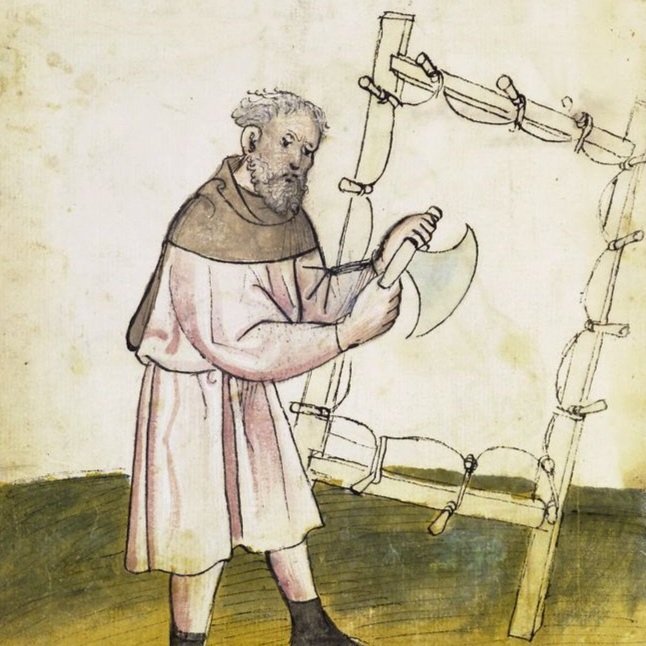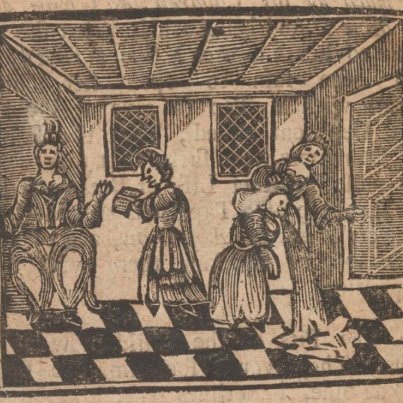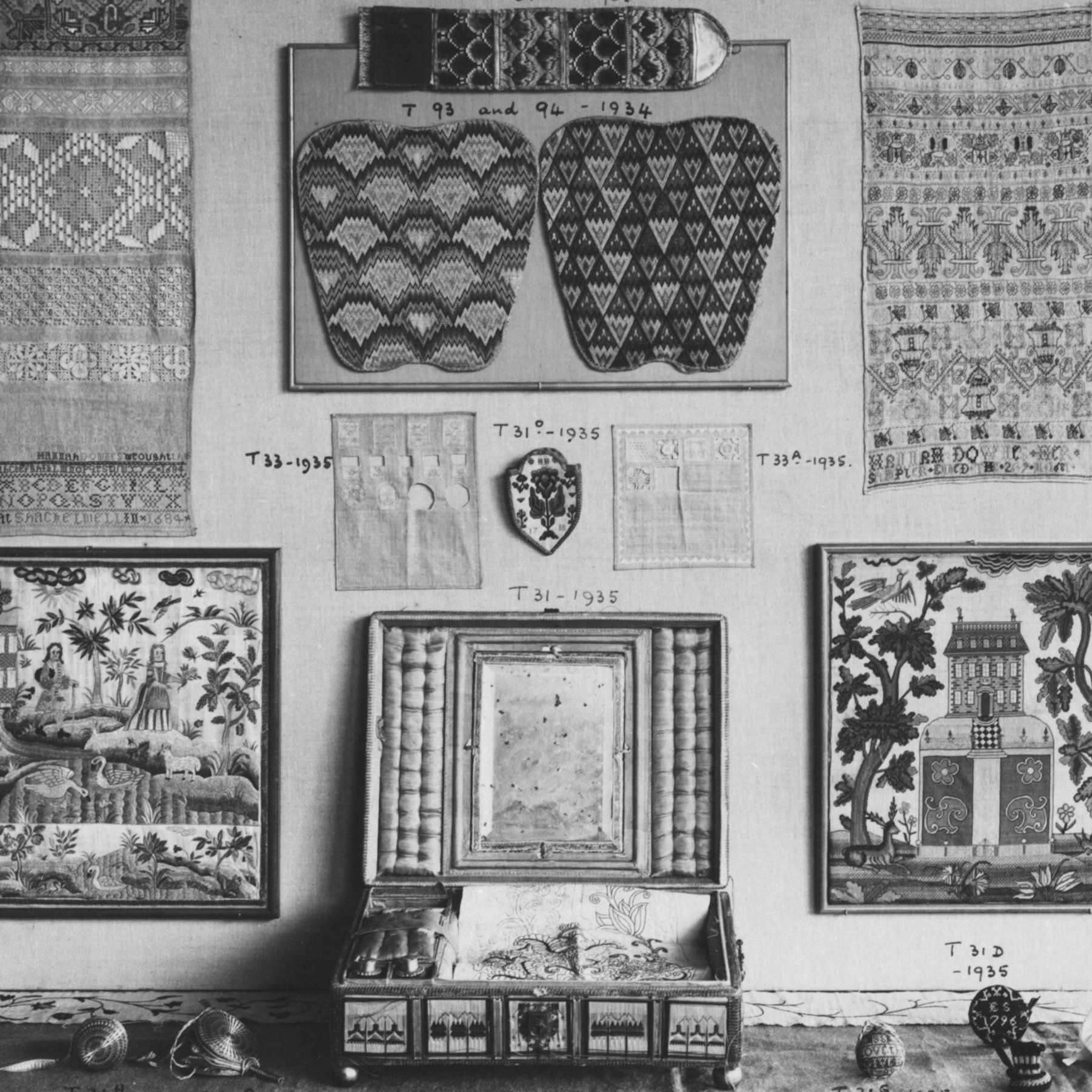Key Things
Key Things is a postgraduate series that explores the complex relationships that exist between beings and things in the world, and some of the ways in which these (and the objects themselves) shift and change through time in different historical contexts. Each piece is by a PhD student and takes a single object — or ‘key thing’ — as both its title and point of departure. Drawing connections across disciplines of early modern study, the series asks new questions about the nature of provenance, categorisation, consumption, objectivity, materiality, (im)permanence, performance, inheritance, and the ways objects tell stories.

Cambric
Anouska Lester uses a single piece of cambric to uncover the histories, networks, and legacy of Margaret Dane, an early modern business woman.

Parchment
Lily Freeman-Jones traces the intimate connections between animal and human in the production and legal use of parchment in early modern England.

Pin
Imogen Knox examines the essential place of the pin in early modern British life, pricking at its political, cultural, and gendered connotations.

Workbox
Isabella Rosner unpacks the embroidered workbox of Hannah Downes, exploring what its contents can tell us about 17C Quaker women’s art.
Use the Word Cloud to group posts by shared theme. You can reset your filter by clicking here.
- Accumulation
- Advertisement
- Affect
- Afterlife
- Animal
- Antiquarianism
- Art
- Artefact
- Beauty
- Body
- Business
- Categorisation
- Celebrity
- Church
- Commodity
- Consumption
- Craft
- Culture
- Dance
- Debt
- Descendants
- Domestic
- Drama
- Education
- Environment
- Europe
- Everyday
- Fabric
- Family
- Folk
- Food
- Foreign
- France
- Function
- Gender
- Gift
- Hair
- Health
- History
- Human
- Impermanence
- Instrument
- Interiority
- Interpretation
- Language
- Law
- London
- Lost
- Love
- Luxury
- Material
- Medicine
- Memory
- Metaphor
- Mobility
- Monarch
- Museum
- Music
- Myth
- Networks
- Night
- Objectivity
- Occasion
- Performance
- Personal
- Playhouse
- Poetry
- Politics
- Popular
- Practice
- Private
- Process
- Production
- Provenance
- Public
- Publication
- Race
- Recipe
- Record
- Religion
- Resources
- Rural
- Science
- Self
- Slavery
- Space
- Spiritual
- Spontaneity
- Status
- Suicide
- Supernatural
- Tactility
- Text
- Textile
- Trade
- Tradition
- Transformation
- Value
- Witchcraft
- Women
Or search the series by way of a term or phrase of your choice:
Key Things Image Bibliography.
Bed: Rembrandt van Rijn. Bedroom with Saskia in a Canopy Bed. ca 1638. Rijksmuseum, Amsterdam.
Buskins: Israhel van Meckenem. Ornamental Engraving with Morris Dancers. ca. 1490. The Metropolitan Museum of Art, New York.
Cambric: Edward Cocke. Portrait of Margaret Dane. 1640. Reproduced by permission of the Worshipful Company of Ironmongers, London.
Comb: Jan Miense Molenaer. Allegory of Vanity. 1633. Object No. 1975.21. Toledo Museum of Art.
Dust: Domenico Remps, Cabinet of Curiosities (c. 1690). Museo dell’Opificio delle Pietre Dure, Florence.
Microscope: Robert Hooke. Micrographia: or some physiological descriptions of minute bodies made by magnifying glasses. With observations and inquiries thereupon (1665). Credit: Wellcome Collection. CC BY 4.0.
Mummy: ‘Plate showing different types of mummies and the mummification process’ from Pierre Pomot, A compleat history of druggs divided into three classes, vegetable, animal and mineral (London, 1712). Wellcome Collection. CC BY 4.0.
Parchment: Hausbuch der Mendelschen Zwölfbrüderstiftung (Nürnberg: 1426-1549), Stadtbibliothek Nürnberg, Amb. 317.2, fol. 34v.
Pin: W. P., The History of Witches and Wizards (London, 1720), p.50. Wellcome Collection, Public Domain Mark.
Subtlety: Print by Arnold van Westerhout, After Giovanni Battista Lenardi. ‘Two sculptures in sugar with allegories of the family of Catlemaine, as used for the banquet offered by the Earl of Castlemaine on 14 January 1687’. Etching. 1688. © The Trustees of the British Museum.
Underworld: Limoges enamel of Aeneas and the Sybil in the Underworld (back). Fitzwilliam Museum M7-1945, Cambridge. ca. 1527 – 1530.
Violin Bridge: Detail from Master of the Acquavella Still Life. Still-Life with a Violinist. ca. 1620.
Workbox: Suite of objects made by Hannah Downes and her descendants, 1680s-1860s, photograph taken circa 1935. © Victoria and Albert Museum, London
Editor: Jonathan Powell (2022-23)